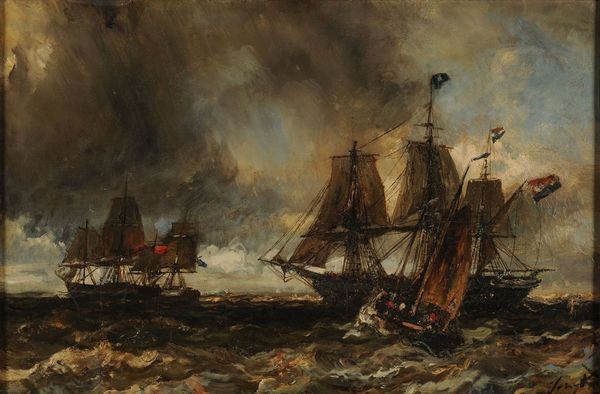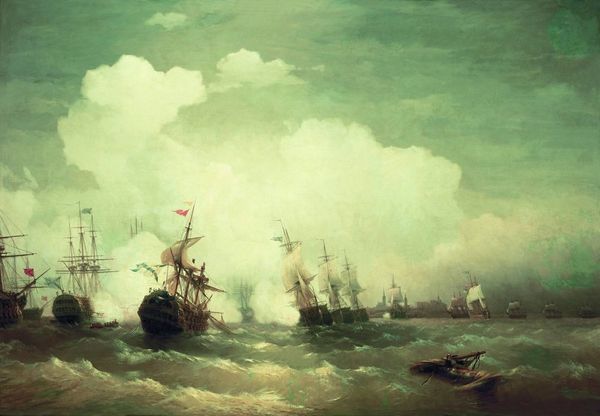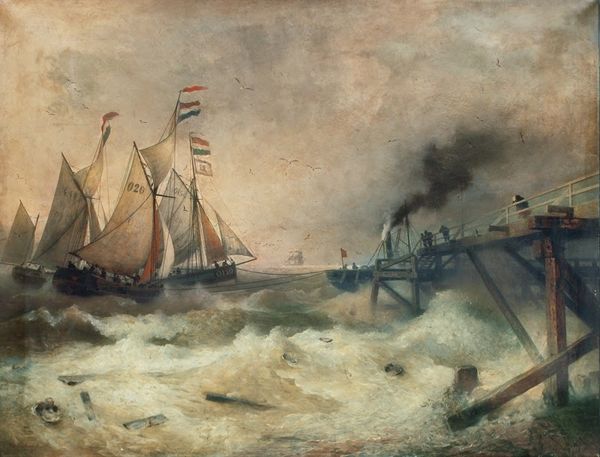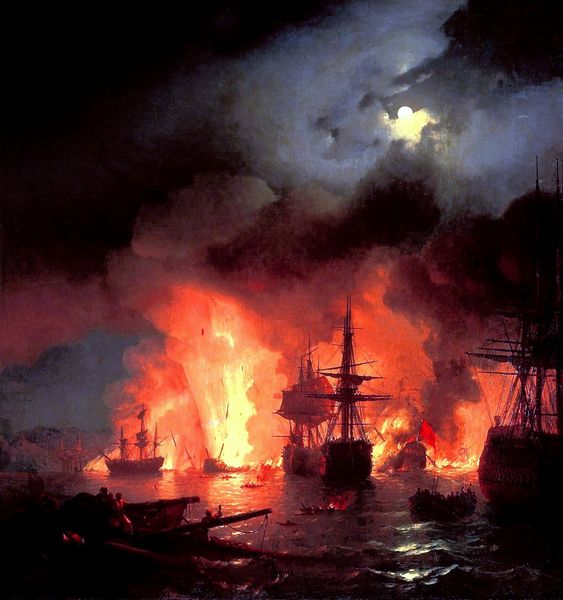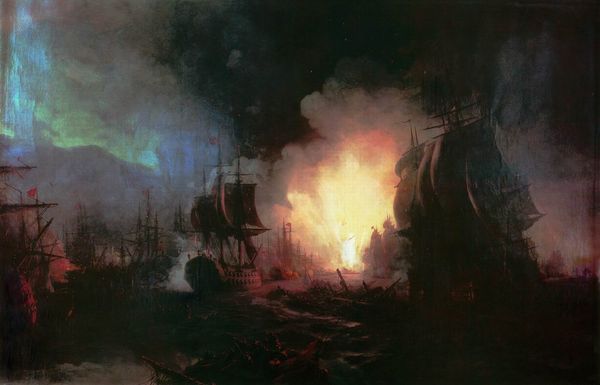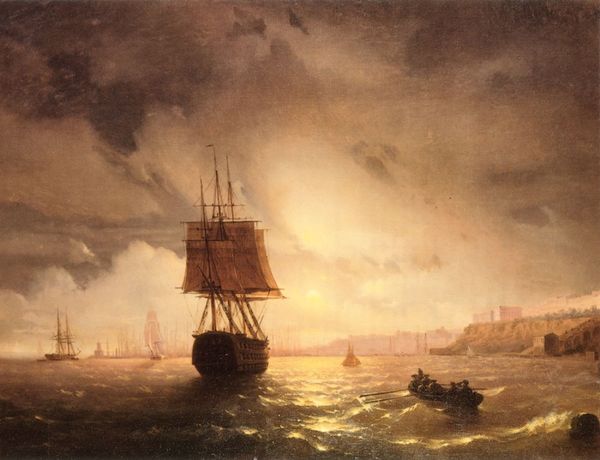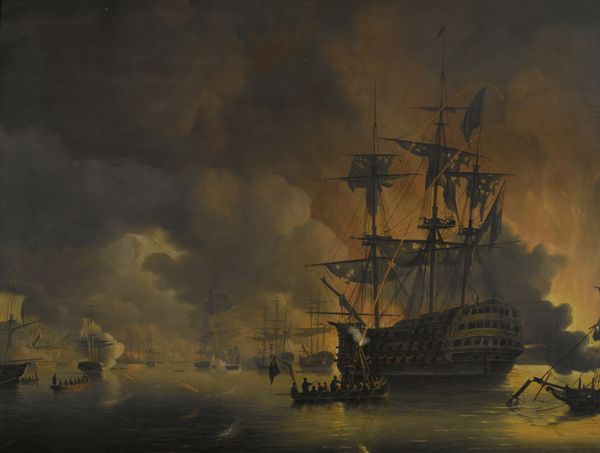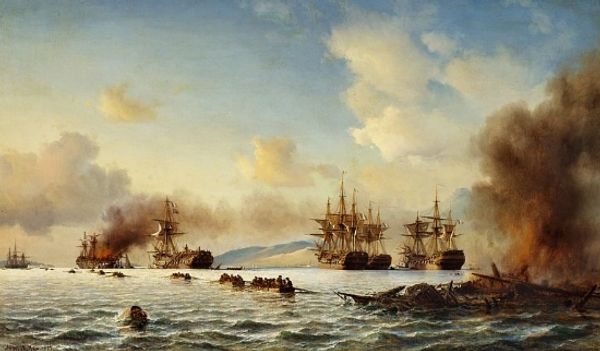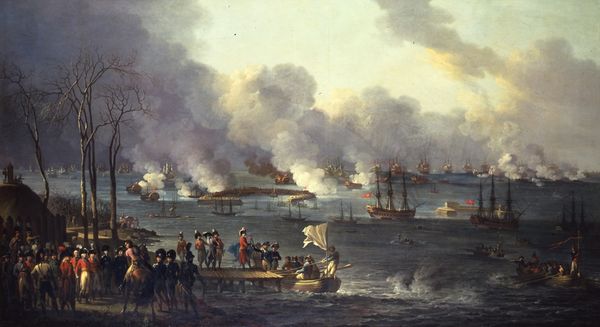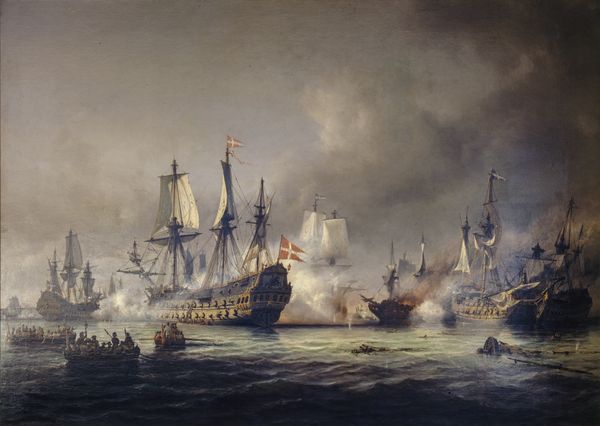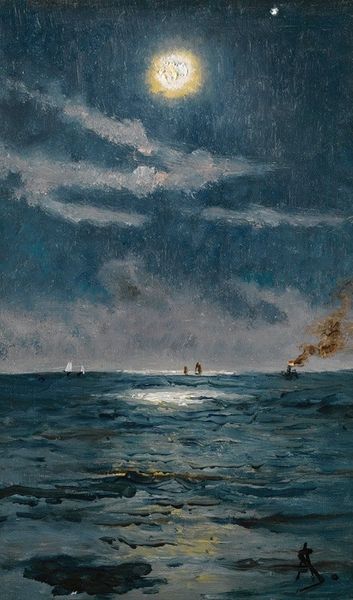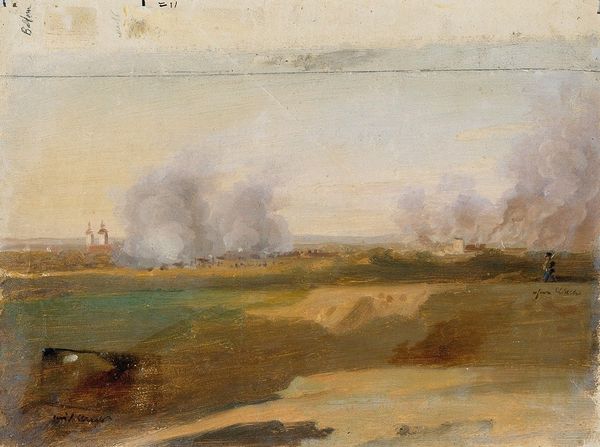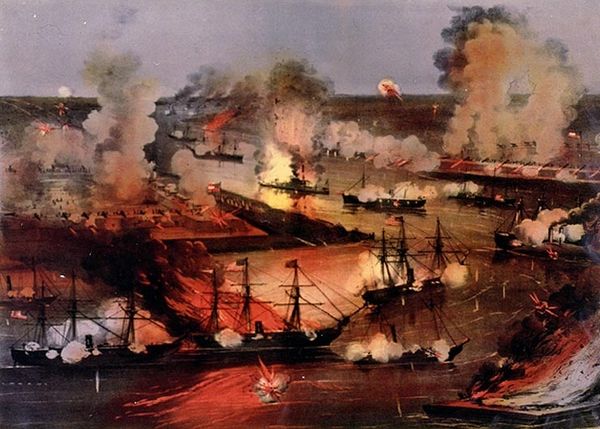
painting, oil-paint
#
sky
#
narrative-art
#
ship
#
painting
#
atmospheric-phenomenon
#
oil-paint
#
war
#
landscape
#
oil painting
#
ocean
#
romanticism
#
history-painting
#
sea
Copyright: Public domain
Curator: Ivan Konstantinovich Aivazovsky's "Sea Battle near Vyborg," painted in 1846, vividly depicts a naval engagement. It's oil on canvas, and just looking at it evokes a sense of immense chaos. Editor: Indeed. The materiality of the thick paint, especially in that towering cloud of smoke, practically thrusts the violence of the scene upon the viewer. It's not just representation; it’s visceral. I imagine the laborers involved in extracting those pigments, grinding them, combining them... Curator: That dramatic use of light and shadow is very characteristic of Romanticism. Aivazovsky painted many seascapes, and this work clearly shows the influence of history painting, depicting a real event with emotional intensity, part of the Russian Empire's self-fashioning and glorification of the navy. Editor: Right, but consider also the process of creation – applying layers upon layers of paint, almost a sculptural build-up of texture where the explosions and roiling waves occur. The labor intensiveness counters any simple narrative of national glory. It represents tremendous human input, not just the subject, but the facture. Curator: Surely the painting aimed to convey more than mere labor. It’s part of the larger historical trend of nationalistic art, serving a didactic purpose by memorializing a naval victory for the Russian audience. Its display in public galleries certainly solidified this aim. Editor: I concede the institutional intentions are significant, however, the visible brushstrokes reveal something raw, almost unfinished in places – a tangible reminder of human agency. The commodification of pigments and production in his studio becomes paramount for discussion. We need to remember the cultural and material aspects. Curator: I see your point. But think too, about Aivazovsky's own social standing and how the Academy shaped his career. He had direct ties to the Imperial court, giving him an active role in picturing Imperial power for popular consumption. It all reflects the politics of imagery inherent in institutions such as the Tsar's Court or, later, public museums. Editor: A powerful perspective! Considering both the making and its purpose gives us a much broader understanding. Curator: Exactly. Looking at it this way enriches our appreciation.
Comments
No comments
Be the first to comment and join the conversation on the ultimate creative platform.
